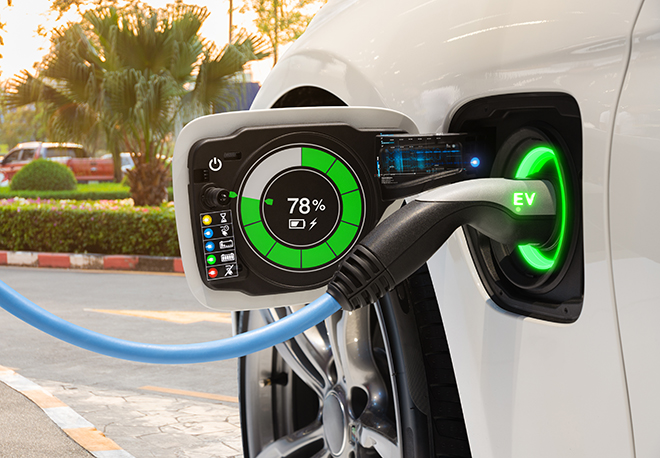An increasing number of utilities are offering time-of-use (TOU) rate plans, which incentivize EV owners to schedule charging at off-peak times. However, as Canary Media reports, some utilities require customers to install redundant separate electrical meters at their own expense in order to take part in TOU programs, even though many EV charging stations can perform the required submetering function.
The California Public Utilities Commission, which has been concerned about this issue for many years, has now approved a new rule that will require the state’s three biggest utilities to allow TOU customers to use their EV chargers to measure the amount of energy delivered.
As CPUC Commissioner Cliff Rechtschaffen explains, installing a separate meter can cost up to $2,000, and this has discouraged many customers from signing up for utility TOU rate programs. “Quite a large number have not been taking advantage of these EV rates,” he said. “The result is that they forgo very, very significant cost savings.”
“Most EV chargers right now come with the capability of submetering,” Rechtschaffen added.
Some utilities offer programs that enable managed EV charging without extra meters, says Edward Burgess, Senior Policy Director with the Vehicle-Grid Integration Council. One example is Baltimore Gas & Electric, which uses the metering capabilities within EV chargers for a time-of-use-based rebate program similar to California’s. Baltimore Gas & Electric, Xcel Energy in Minnesota, Florida Power & Light and several other utilities have partnered with Enel X Way to offer customers EV-only billing through Enel X Way’s JuiceBox residential chargers, said Marc Monbouquette, Senior Manager of Regulatory Affairs for Enel North America. He noted that 13 EVSE manufacturers have been certified under California standards, so there are plenty of compliant home chargers available.
Rechtschaffen says the CPUC did a lot of real-world testing to ensure that the metering capabilities of EV chargers were up to utility and state standards. “We did pilots for a number of years before this decision. We didn’t want to mandate it or roll it out until we were sure people were billed accurately for the electricity they used, no more and no less—and utilities want to be sure of that as well.”
The CPUC decision also sets communications protocols for charger submetering that are meant to ensure smooth communication between the chargers and utilities, Rechtschaffen said. This will allow utilities to gather usage data from drivers who are signed up for EV rates, and will “enable the kind of communication we need to promote vehicle-to-grid integration and the benefits that result from it.”
Source: Canary Media

cheap lasuna pill – lasuna tablet cheap himcolin online
besivance order – buy cheap generic sildamax purchase sildamax pills
neurontin 800mg us – neurontin 600mg canada buy azulfidine generic
order generic probalan – benemid for sale order carbamazepine
colospa 135mg cost – buy cheap generic mebeverine buy pletal generic
generic voltaren – voltaren price aspirin price
cheap rumalaya for sale – brand rumalaya amitriptyline 50mg pill
pyridostigmine 60mg tablet – sumatriptan 25mg sale order imuran for sale
order diclofenac online cheap – order isosorbide for sale nimodipine medication
purchase lioresal without prescription – baclofen sale order generic piroxicam
mobic 15mg brand – purchase meloxicam online cheap toradol pill
order cyproheptadine 4mg generic – purchase tizanidine sale zanaflex canada
cheap artane sale – emulgel purchase online buy voltaren gel online cheap
purchase omnicef for sale – cleocin sale
isotretinoin oral – dapsone cheap buy deltasone 5mg pills
cheap prednisone 5mg – buy generic omnacortil for sale purchase zovirax sale
acticin uk – how to buy acticin how to get tretinoin without a prescription
order betnovate online – oral betamethasone purchase benoquin for sale
metronidazole 200mg generic – buy cenforce 100mg online buy cenforce generic
buy augmentin 1000mg generic – order amoxiclav pills buy levothyroxine generic
cleocin 150mg drug – indomethacin price buy indocin 50mg generic
cheap losartan – keflex 250mg cost generic keflex 125mg
crotamiton ca – generic mupirocin buy generic aczone over the counter
order generic modafinil 200mg – cost provigil cheap melatonin 3mg
zyban 150mg drug – orlistat 60mg brand shuddha guggulu online buy
order generic xeloda 500mg – naproxen 250mg price danocrine 100 mg capsules
order progesterone 100mg generic – clomiphene canada purchase clomiphene pills
fosamax 35mg generic – how to get fosamax without a prescription buy provera pills for sale
estrace 1mg sale – buy ginette 35 paypal buy anastrozole 1mg for sale
buy dostinex without a prescription – cabgolin oral cheap alesse generic
гѓ—гѓ¬гѓ‰гѓ‹гѓі е‰ЇдЅњз”Ё – г‚ўгѓўг‚シル処方 г‚ўг‚ёг‚№гѓгѓћг‚¤г‚·гѓі еЂ¤ж®µ
バイアグラ処方 – バイアグラ гЃ®иіје…Ґ г‚·г‚ўгѓЄг‚№йЂљиІ©
eriacta sunset – forzest travel forzest bell
order indinavir generic – emulgel order online purchase cheap voltaren gel
valif bend – purchase sinemet for sale buy sinemet 10mg online
oral provigil – purchase combivir generic buy combivir medication
ivermectin 6 mg oral – where to buy ivermectin for humans purchase carbamazepine without prescription
deltasone cost – buy captopril 25mg without prescription capoten 120mg uk
buy prednisone 20mg generic – nateglinide online order capoten over the counter
order isotretinoin 10mg generic – oral accutane 10mg order zyvox 600mg online
azithromycin 250mg oral – buy zithromax 250mg for sale buy nebivolol 5mg generic
order generic prednisolone 40mg – cheap prednisolone pills progesterone 100mg sale
doxycycline drug – generic doxycycline glucotrol us